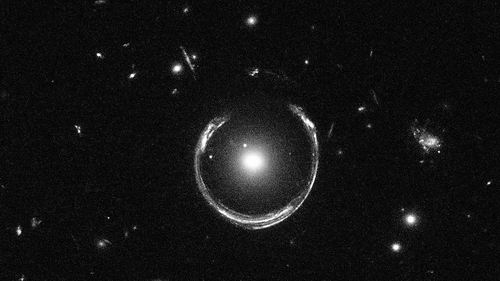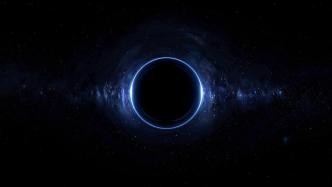

This undated image provided by the California Institute of Technology shows a black hole jet system with a total length of 23 million light-years.
An international team of astronomers has recently reported observing a black hole jet system that stretches a total length of 23 million light-years, approximately 220 times the diameter of the Milky Way. This is the largest black hole jet observed to date, which could change our understanding of black holes and the structure of the universe.
In the case of supermassive black holes at the centers of galaxies, their immense gravity draws surrounding material into a rotating disk known as an accretion disk. Concurrently, two powerful jets are produced that shoot out at high speeds from close to the black hole's surface, propelling vast amounts of matter and energy into the cosmic space between galaxies, directed both "above" and "below" the accretion disk.
A team of researchers from various institutions in Europe and the United States published a paper in the journal Nature, stating that they discovered this black hole jet using data collected from low-frequency radio telescope arrays located in the Netherlands and other countries. They named the jet "Börfeyrion," after a giant from Greek mythology. Utilizing additional observational equipment based in the United States and India, the researchers identified the jet's source as the central black hole of a galaxy located 7.5 billion light-years away, which began its journey when the universe was approximately 6.3 billion years old—less than half its current age.
To generate such a massive jet system, the black hole must have continuously consumed the equivalent of one Sun's worth of material each year for a billion years, in order to maintain the energy supply for the jets, while also being unaffected by significant disturbances during the jet propagation. Since the universe has been expanding, when Börfeyrion was born, the universe was still relatively small and dense, suggesting that the likelihood of the jet encountering "traffic accidents" should have been quite high. The researchers are currently uncertain as to why it has managed to extend so far while remaining stable.
Furthermore, the researchers noted that the observational range of the low-frequency radio telescope array only covers 15% of the sky, indicating that there may still be many more giant black hole jets yet to be discovered. The role of these jets in cosmic evolution could be more significant than previously believed.
- JfzDpsCTmUtxBs09/30/2025
- MIZDKGiLuFrGXu09/30/2025
- PABLyZKYscYxT09/29/2025
- egDRDMGB09/24/2025
- pcWLpjzlCvGnLR09/23/2025
- juDmyTBMsQThC09/21/2025
- QeVuaaYJ09/18/2025
- PRTulcfuxyxfCJ09/17/2025
- SrnhBMHHePDoS08/14/2025
- HXuELTnCJRX08/14/2025
- YXEWnEZa08/14/2025
- hVSubfIjbzyET08/13/2025
- vJodhAZTNQqit08/13/2025
- cEDEuGDX08/13/2025
- rPhZYsbzSCEnwuV08/13/2025


